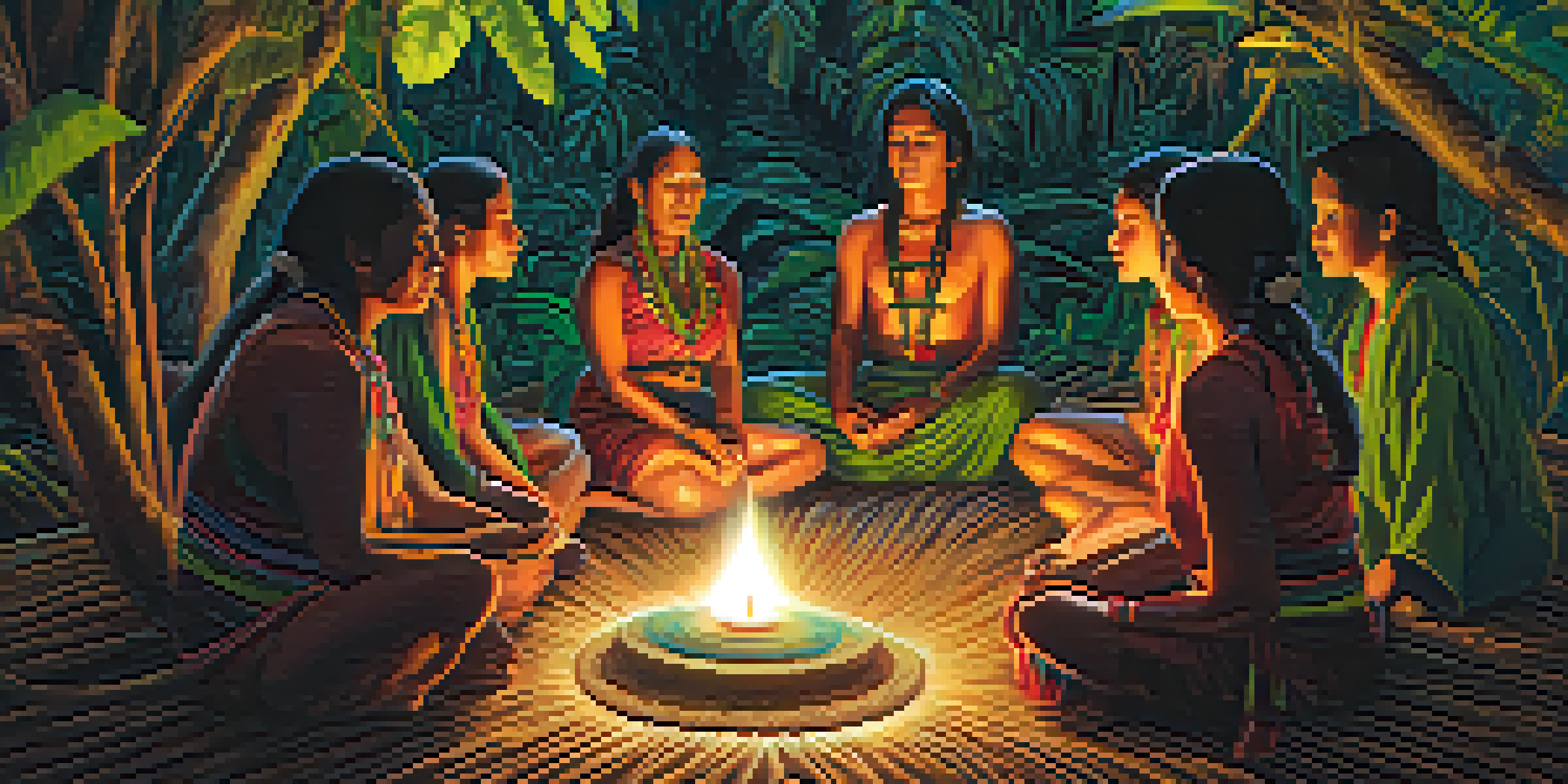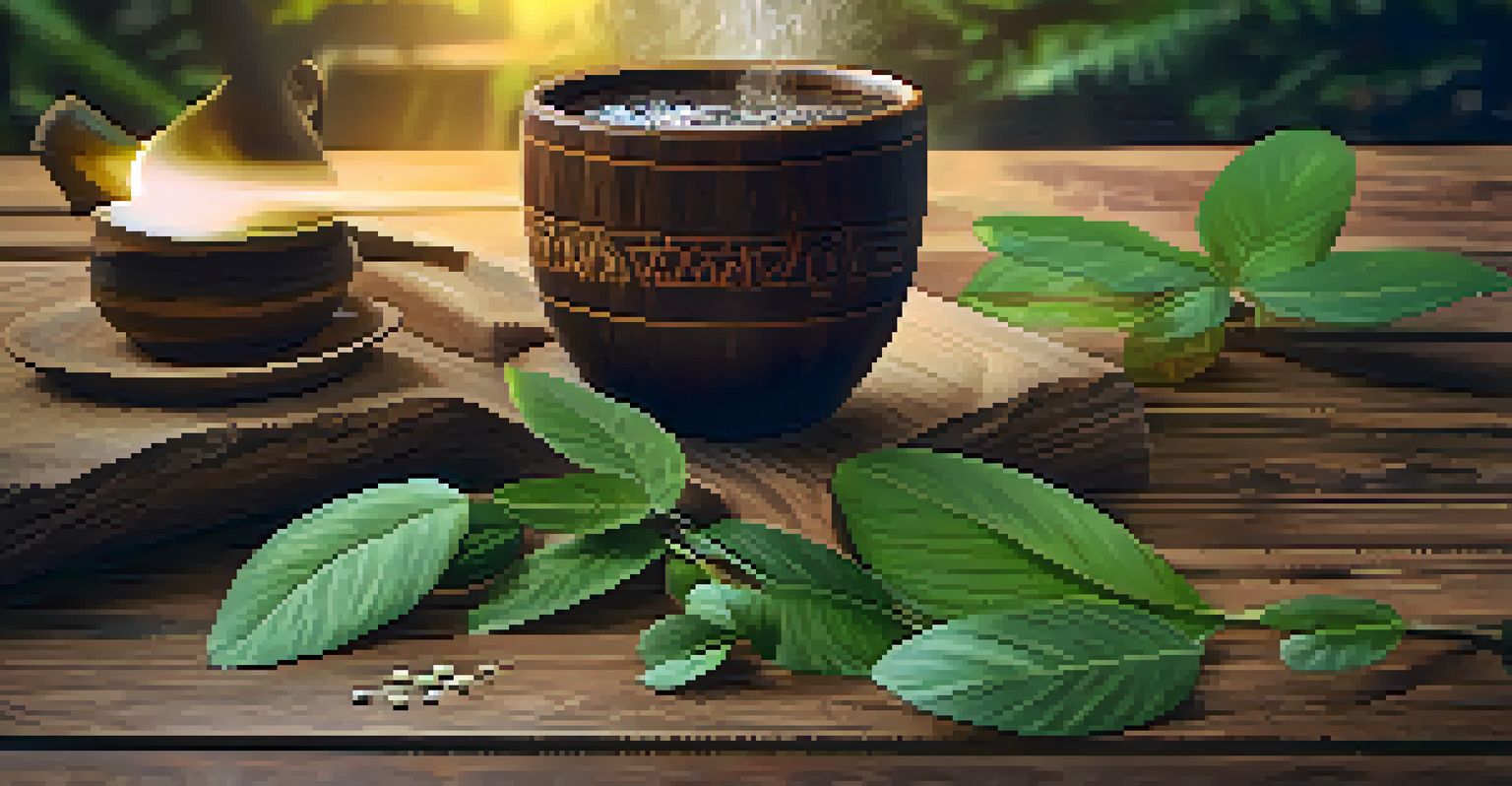Exploring Ayahuasca: A Journey Towards Personal Meaning

What is Ayahuasca and Its Cultural Significance?
Ayahuasca is a powerful brew originating from the Amazon rainforest, traditionally used by indigenous tribes for spiritual and healing purposes. Made from the Banisteriopsis caapi vine and other plants, it has gained popularity in recent years as a means of exploring the self. The ritualistic consumption of Ayahuasca is steeped in cultural significance, often accompanied by guided ceremonies led by experienced shamans.
The experience can be intense and transformative, often leading individuals to confront deep-seated emotions and traumas.
In these ceremonies, participants seek clarity, healing, or profound insights into their lives. The experience can be intense and transformative, often leading individuals to confront deep-seated emotions and traumas. For many, Ayahuasca serves as a bridge to understanding their purpose and place in the universe.
As Western interest in Ayahuasca grows, it’s essential to respect its origins and the wisdom of the cultures that have embraced it for centuries. Understanding this context enriches the experience and highlights the importance of mindful participation in such ceremonies.
The Science Behind Ayahuasca: What Happens in the Brain?
Ayahuasca contains DMT (dimethyltryptamine), a substance that can induce vivid hallucinations and altered states of consciousness. When consumed, DMT interacts with receptors in the brain, leading to profound changes in perception and emotion. Research suggests that these experiences can promote neural plasticity, allowing for new patterns of thought and behavior.

Studies have shown that participants often report lasting positive changes in their mental health, such as reduced anxiety and depression. This scientific backing lends credibility to the anecdotal evidence of transformation experienced by many Ayahuasca users. Essentially, the brew may act as a catalyst for personal growth and healing, opening the mind to new possibilities.
Ayahuasca's Cultural Roots
Ayahuasca is a traditional Amazonian brew used for spiritual and healing purposes, emphasizing the importance of respecting its cultural origins.
However, it's important to approach this powerful substance with caution. While the potential benefits are significant, the experience can also be challenging, requiring a strong support system and proper guidance.
Preparing for Your Ayahuasca Journey: What to Expect
Preparation is key when embarking on an Ayahuasca journey. Many facilitators recommend a period of dietary and lifestyle changes to ensure a safer experience. This often includes abstaining from alcohol, caffeine, and certain foods that could interact negatively with the brew.
Integration is not just about understanding what happened; it’s about implementing changes in behavior, mindset, and lifestyle.
Participants are encouraged to set intentions before the ceremony, reflecting on what they hope to gain from the experience. This intention-setting can help focus the mind and provide clarity during the often chaotic journey. Engaging in meditation or journaling can also be beneficial in the days leading up to the ceremony.
Understanding that the experience can be unpredictable is crucial. Each person's journey with Ayahuasca is unique, shaped by their individual backgrounds and intentions, which can lead to a wide range of emotional and spiritual revelations.
The Ayahuasca Ceremony: What Happens During the Experience?
During an Ayahuasca ceremony, participants typically gather in a serene setting, often surrounded by nature. The atmosphere is carefully crafted by the shaman, who plays a crucial role in guiding the experience. As the brew is consumed, participants may begin to feel its effects within a short period, leading to a range of sensations and emotions.
The journey can involve intense visual and auditory experiences, often described as a deep dive into the subconscious. Many report encountering vivid imagery and experiencing profound emotional releases, which can be both enlightening and overwhelming. The shaman often uses traditional songs, or icaros, to help guide participants through their experiences.
Brain Changes from Ayahuasca
The brew contains DMT, which can lead to profound changes in perception and emotional health, promoting neural plasticity and personal growth.
It's essential to approach this aspect of the ceremony with an open mind, as the journey can bring both joy and discomfort. Understanding that difficult emotions may arise can prepare participants for the healing that often follows.
Processing Your Ayahuasca Experience: Integration is Key
After the ceremony, the integration of your experience becomes crucial for personal growth. This process involves reflecting on the insights gained during the journey and finding ways to incorporate them into daily life. Many participants find journaling helpful as it allows them to articulate their thoughts and feelings.
Sharing experiences with others who have undergone similar journeys can also be beneficial. Support groups and integration workshops provide a safe space for discussing emotions and experiences, fostering a sense of community. This connection can be vital in processing the often profound realizations that arise from Ayahuasca ceremonies.
Integration is not just about understanding what happened; it’s about implementing changes in behavior, mindset, and lifestyle. This ongoing process can lead to lasting transformation, helping individuals align more closely with their true selves.
Potential Risks and Considerations of Ayahuasca Use
While many people report positive experiences with Ayahuasca, it’s crucial to acknowledge the potential risks involved. The brew can provoke intense psychological reactions, and not everyone is prepared for the emotional challenges it may bring. Individuals with a history of mental health issues should approach Ayahuasca with caution and consult with healthcare professionals beforehand.
Additionally, the quality and sourcing of Ayahuasca can vary significantly between facilitators, which can affect the safety and efficacy of the experience. It's essential to thoroughly research any retreat or ceremony, seeking recommendations and reading reviews to ensure a safe environment.
Integration Post-Ceremony
Reflecting on and integrating insights from the Ayahuasca experience is essential for personal growth and lasting transformation.
Being aware of these risks doesn’t mean you should shy away from the experience; rather, it emphasizes the importance of preparation and informed decision-making. Understanding both the potential benefits and dangers can help participants navigate their Ayahuasca journey responsibly.
The Future of Ayahuasca: Trends and Evolving Perspectives
As interest in Ayahuasca expands globally, so too does the conversation surrounding its use. Many are advocating for greater respect and understanding of its cultural roots, emphasizing the importance of ethical practices when participating in ceremonies. This includes supporting indigenous communities and ensuring that their traditions are honored.
The growing body of research around Ayahuasca's therapeutic effects is also driving conversations about its place in mental health treatment. Some mental health professionals are exploring the potential for Ayahuasca to complement traditional therapies, providing new avenues for healing.

As society evolves, so does our understanding of wellness and spirituality. Ayahuasca may play a significant role in this shift, offering insights into the profound connections between mind, body, and spirit in our quest for personal meaning.